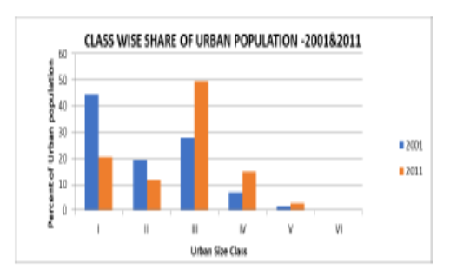
Geo-Eye
Department of Geography & GIS

Department of Geography & GIS

Geo-Eye
Year: 2024, Volume: 13, Issue: 2, Pages: 20-25
Original Article
D Venkita Surya1, K Prakash2, Jegankumar2, Richard Scaria3
1Research Scholar, Department of Geography, Bharathidasan University, Tiruchirappalli, 620024, Tamil Nadu, India
2Department of Geography, Bharathidasan University, Tiruchirappalli, 620024, Tamil Nadu, India
3Department of Geography, Government College Chittur, Palakkad, Kerala, India
Received Date:31 July 2024, Accepted Date:22 November 2024
From the beginning the trend and the spatial pattern of urbanization in Kerala is unique and different from the general trend taken place in India. In 2011 Kerala is only 9th urbanized state in India with an urban population of 47.72%. Interestingly, the Census of India Population Projections for India and States predicts Kerala will be the 2nd most urbanized state in India with an urban share of 96.43% in 2036. This study intends to identify trend and regional imbalances in urban growth in Kerala at district level and to examine the distribution of urban population across cities measures such as Urban Rural Growth Differential (URGD), Lorenz Curve, Gini Co-efficient and Primacy Index are computed. Results reveal that Kerala exhibits an upward trend of urbanization with a high disparity at district level and no city enjoys the power of Primate City in the state. It is inferred that Kerala is going through acceleration stage of urbanization which demands adequate planning in infrastructure, transportation system, zoning of regulations and green spaces in order to meet the requirements of future.
Keywords: Urbanization, Urban Rural Growth Differential, Primacy Index, Urban Growth, Population Projection
© 2025 Surya et al. This is an open-access article distributed under the terms of the Creative Commons Attribution License, which permits unrestricted use, distribution, and reproduction in any medium, provided the original author and source are credited.
Published By Bangalore University, Bengaluru, Karnataka
Subscribe now for latest articles and news.